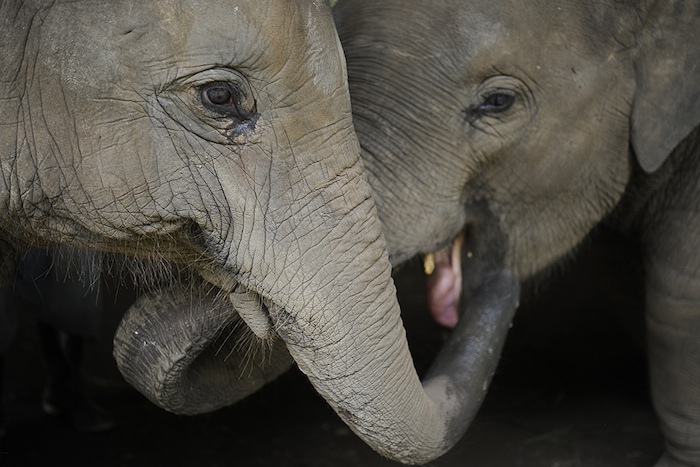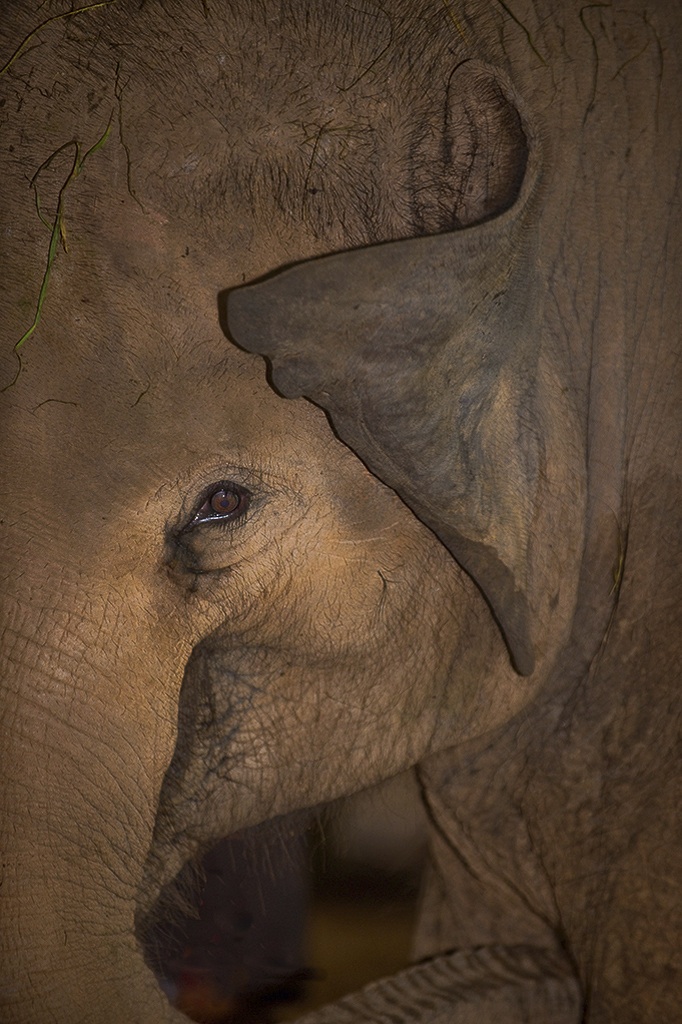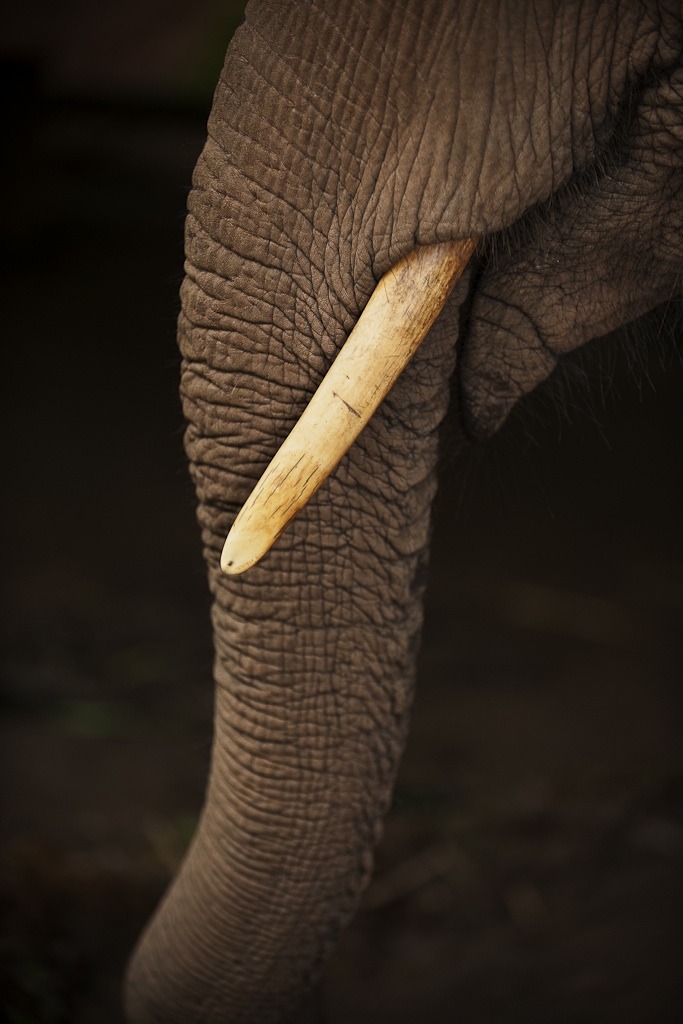
|
|
 |
||||||||||||||||||||
|
|
|||||||||||||||||||||
|
CAROL STEVENSON Elephant Ambassador with a Lens By Katey Pfeil Carol Stevenson is a woman on a mission: armed with heavy camera gear and an unstoppable desire to bring awareness to the plight of the Asian elephant,  this British-born photographer who specializes in landscape, wildlife and documentary photography is a one-woman show. Capturing the lives of elephants and their caretakers (mahouts) at The Golden Triangle Asian Elephant Foundation (GTAEF) in Northern Thailand has become her personal campaign. The images sheís collecting are part of her 5-year ďvisual recordĒ for the organization, and with them she intends to show the story and personality behind each elephant she meets - motivating others to care about and want to help preserve these endangered animals. this British-born photographer who specializes in landscape, wildlife and documentary photography is a one-woman show. Capturing the lives of elephants and their caretakers (mahouts) at The Golden Triangle Asian Elephant Foundation (GTAEF) in Northern Thailand has become her personal campaign. The images sheís collecting are part of her 5-year ďvisual recordĒ for the organization, and with them she intends to show the story and personality behind each elephant she meets - motivating others to care about and want to help preserve these endangered animals. ARK & TENT recently had the opportunity to get to know a bit more about Stevenson and her project while chatting with her about her latest efforts at The Golden Triangle Asian Elephant Foundation. ARK & TENT: Can you tell us a little bit about how you came to be involved with the GTAEF project? Stevenson: My knowledge of Thai culture began about 15 years ago when I was in Thailand on business for my marketing job. I wasnít photographing professionally then, but I was horrified by an elephant I saw in the city whose leg had been blown off by a land mine and forced to be a sidewalk attraction. It was sad to see such a beautiful animal crippled in such a way. His vulnerability really touched me, but it was some time before I got into professional photography and was contacted by the GTAEF. A casual offer from the foundation to ďcome and photograph our elephantsĒ is how it all got started. Weíre currently in our second year. A&T: How do the mahouts and elephants earn a living at the center, and what do their day-to-day activities consist of? Stevenson: The elephants assist in treks for visitors who stay at neighboring hotels (like the Four Seasons), and that provides a way for the mahouts to make an honest living. There is also a silk cottage on the property, which allows the wives to make additional money. The mahouts, their families and elephants, are welcome to leave at any point; however, as food for the entire family and an education for the children  are provided, other options are dismal in comparison. are provided, other options are dismal in comparison. A&T: What other options do modern mahouts and their elephants have? Stevenson: Begging in the streets, really. Poverty is rampant in Thailand and authorities have cracked down on elephants in the city, as many have been injured or killed from falling into manhole covers and having their feet seared by hot tarmac. Most domesticated Asian elephants have worked in logging, carrying huge loads of timber to and from the forest. However, since the logging ban in the late 80ís, many elephants have been forced into the city to collect money for their owners as side-show attractions. The foundation acts as a refuge for the mahouts, their families and their elephants, providing them with an alternative way of life. A&T: Itís a good thing that authorities are cracking down on elephants in the city though, right? Stevenson: Of course! Elephants donít belong on a sidewalk. Itís more than that, though: the mahout culture has been around for centuries. In earlier times, mahouts and elephants worked side by side, slept in the same tent at night and were more or less dependent on one another for survival.  Their culture and way of life is on the decline though, and thatís why the GTAEF aims to provide a positive alternative. Their culture and way of life is on the decline though, and thatís why the GTAEF aims to provide a positive alternative. A&T: What inspires you the most about the mahout culture? Stevenson: Itís a very intimate culture. The mahouts are unique tribal people and their traditions have been passed on from generation to generation. The importance of the elephant in the every-day family life is really striking. Oftentimes, the mahout will see more of his animal than he will of his wife. This bond is what I find most intriguing. A&T: What is your goal in photographing the elephants and mahouts at the GTAEF? Stevenson: The images will be used to foster an educational program to raise awareness of the threats to the elephants and mahout culture, but will also act as a fundraising vehicle via exhibitions and print sales. The photographs are broken into three categories: a distinctive close up set of images of the body characteristics of each elephant, where a different feature of each elephant represents a visual documentary of the animal; portraiture of the mahouts with their elephants, which shows their unique bond; and the elephant community traditions, such as mahout tattoos and elephant handling tools. A&T: Do you have a favorite photograph you have taken for the project? Stevenson: Well, I really like the images of the trunks.  Their trunks are so powerful and each elephantís is unique - similar to a fingerprint - but with 40,000 muscles! Their trunks are so powerful and each elephantís is unique - similar to a fingerprint - but with 40,000 muscles!A&T: What sorts of challenges is the foundation currently facing? Stevenson: Funding and resources are the primary challenges at the moment. Weíre currently looking for grants, which we hope will help out. The foundation is nonprofit and survives on donations. There are about 35 elephants on the property at any given time. The cost to keep one elephant for one year is $12,000 and the elephants eat about 18 hours a day. You do the math; itís not a cheap endeavor. A&T: How can people donate? Stevenson: I recently started a website, which allows people to contribute whatever they can. I realize that most people donít have thousands of dollars to give away, but in just about two weeks, Iíve raised $2,000. I truly believe in the power of people coming together to do what they can. Iíve had Ikon lend me any equipment I need, giving me any bags I want. I have a wonderful print lab producing my prints at cost and Iíve even had people donate simple things like cardboard boxes. People can visit www.helpingelephants.org and www.elephantphotographer.com to get involved. Photo credits: ALL IMAGES COPYRIGHT CAROL STEVENSON For reprint information, go to: www.elephantphotographer.com |
|
|
|
|
| Site Map |